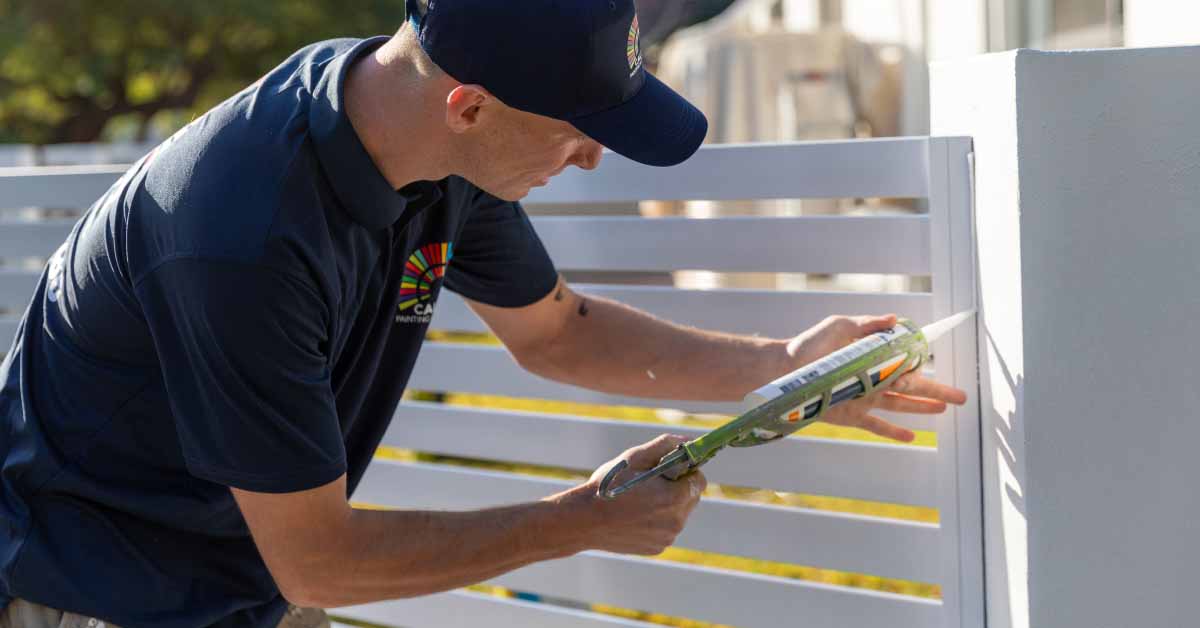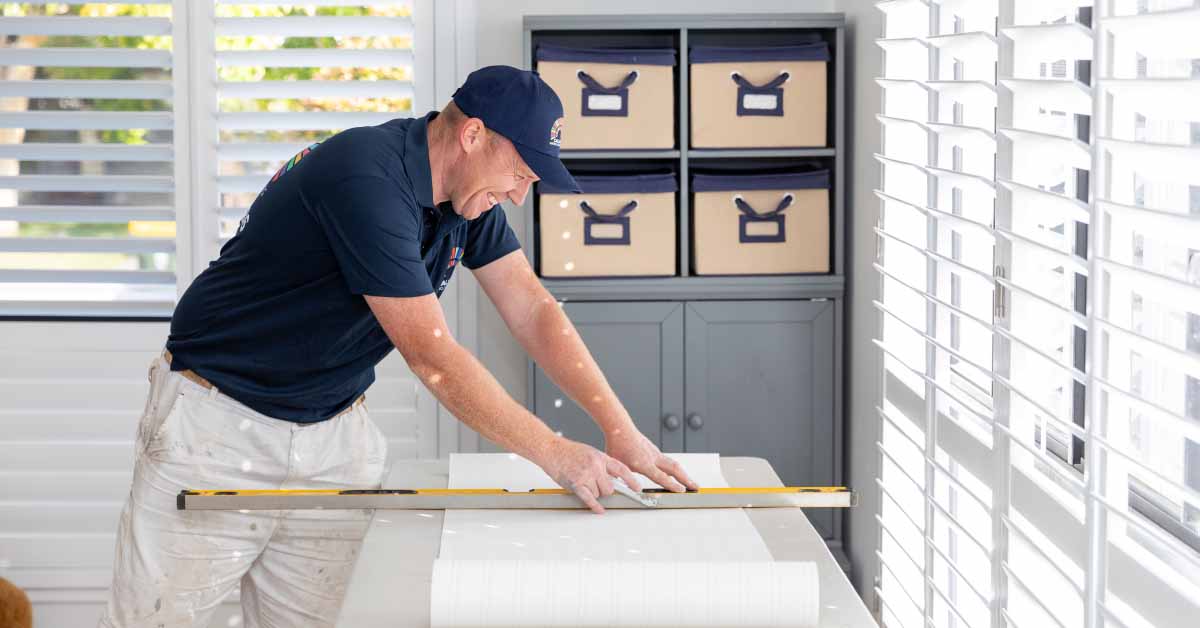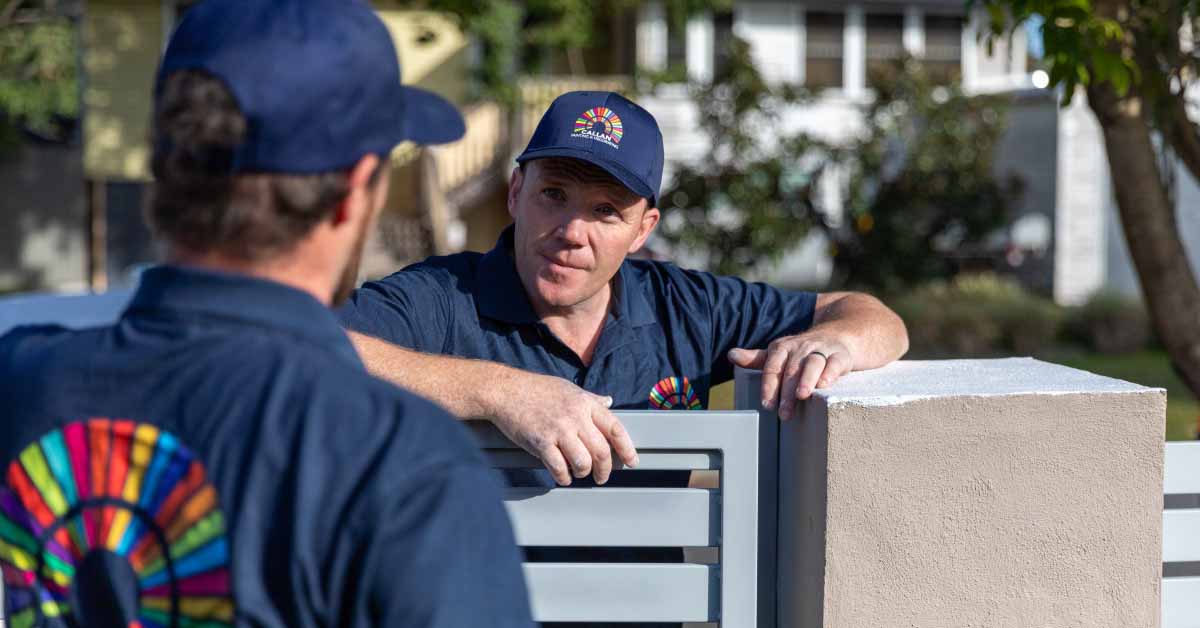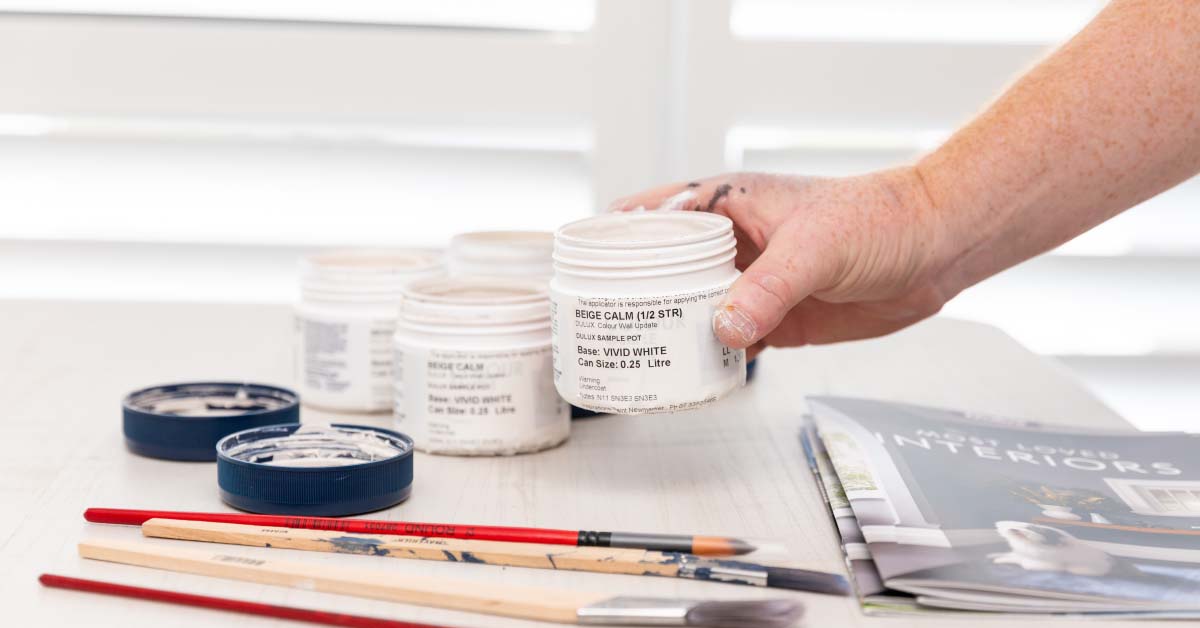When it comes to achieving a flawless, long-lasting paint job, prep work is everything. It’s the foundation upon which the quality of the entire painting project depends. Skipping or rushing through the preparation phase can lead to poor adhesion, uneven surfaces, and a less durable finish.
In this blog post, we’ll break down some of the most common painting and decorating preparation terms you’re likely to encounter. This will give you confidence when reviewing quotes and discussing the work with your chosen professional. Your understanding of these terms will ensure your chosen painter won’t be skipping any step.
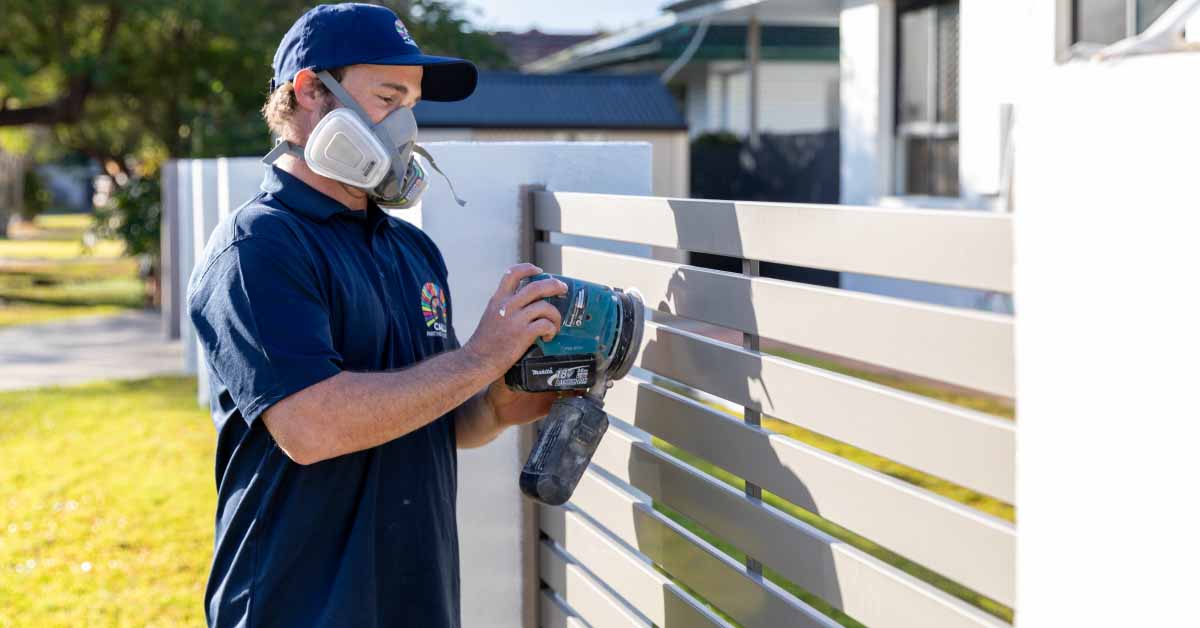
Cleaning
• Dusting: Removing surface dust, cobwebs, or debris from walls and trim.
• Degreasing: Using a special cleaner to remove grease or oil stains, often in kitchens or areas with heavy traffic.
• Power washing: Typically used on exterior surfaces such as driveways, decks, patios, siding, and fences to prepare them for painting, staining, or sealing.
• Washing: Cleaning walls and surfaces with soap and water to remove dirt, grime, or stains.
Sanding
• Sanding Down: The process of smoothing rough or uneven surfaces using sandpaper or an electric sander. This helps the paint adhere better.
• Wet Sanding: Using a damp sponge or cloth with sandpaper to smooth surfaces, which prevents dust from spreading.
• Dusting Off: After sanding, any residual dust must be wiped off before painting to ensure a clean surface.
Filling
• Gapping: Applying a flexible sealant to fill gaps between trim and walls, or to seal cracks and joints.
• Filler: A paste-like material used to fill in holes, cracks, or imperfections in walls or woodwork before painting.
• Joint Compound: Used to fill larger gaps or seams, especially in plasterboard, to create a smooth, even surface.
• Polyfilla: A brand name for a type of filler used to fill cracks, holes, or dents, particularly in plaster or wood.
Priming
Primer: A preparatory coat applied to surfaces before painting. It ensures better adhesion of paint, hides stains, and seals porous surfaces like new plaster or wood.
• Sealer: A special type of primer used to seal porous surfaces, particularly important for new or bare plasterboard and plaster.
• Bonding Primer: A specific primer designed to adhere to difficult surfaces, such as gloss finishes or ceramic tiles.
Taping and Masking
• Painter’s Tape: A special type of tape used to mask off areas you don’t want to paint, like edges, trim, windows, and baseboards, for clean, straight lines.
• Masking Paper: A large roll of paper used to cover furniture, floors, and windows to protect them from paint splatter.
• Plastic Sheeting: Used to cover large surfaces like floors or furniture to prevent paint splatters and spills.
Stripping
• Paint Stripping: The process of removing old paint from surfaces, typically with a chemical stripper, sanding, or heat guns. This is often done for surfaces that will be repainted with a fresh coat.
• Varnish Removal: Similar to paint stripping, but specifically for removing varnish from woodwork.
Patching
• Patchwork: Repairing sections of damaged walls or surfaces by filling and smoothing over the area with plaster or filler.
• Surface Patch: A technique used when a small section of plasterboard has been damaged, and it needs to be filled and blended into the surrounding surface.
Taping Off
• Edge Taping: The technique of carefully applying painter’s tape to the edges of surfaces (like trim or windows) to create a sharp, clean line and prevent paint from spilling onto adjacent areas.
• Edge Sealing: Sealing the edges of painter’s tape to ensure no paint bleeds under it.
Repairs
• Wood Repair: Patching or filling cracks, chips, or holes in wood surfaces to ensure a smooth finish. Please note: a builder or additional trades may be required for this step.
• Masonry Repair: Fixing cracks or holes in concrete or brick surfaces using specialized fillers or sealers. Please note: a builder or additional trades may be required for this step.
Ventilation and Drying Time
• Drying Time: Allowing surfaces to fully dry before moving on to the next step, such as priming or painting.
• Ventilation: Ensuring proper airflow during prep work, especially when using chemical products like primers, fillers, or paint removers.
To conclusion, proper preparation is the key to achieving a flawless, long-lasting paint job. Understanding the essential prep terms and processes ensures you can engage confidently with your painter and make informed decisions. At Callan Painting, we pride ourselves on our expertise and dedication to meticulous prep work, ensuring each project is finished to the highest standard. Our highly trained, professional painters understand that preparation is just as important as the paint itself. If you’re ready to organise a quote or have any questions, don’t hesitate to contact us. We’re here to help bring your vision to life with precision and care!
INSPIRING YOUR NEXT PROJECT
GET THE GUIDE
Callan Paining offers a specialist painting and decorating service. Led by Davie, a proud third generation painter, alongside a skilled team, you could say paint is in our blood. Download our guide to learn more about Callan Painting and Decorating.
A creative approacH, combined with a deep care for every customer and their vision is at the heart of what we do.
Get to know us better. Learn how we can work together on your next project.
LET'S GET ACQUAINTED
© Callan Painting 2024 | All rights reserved
Privacy Policy | Terms + Conditions
Site Design Seed Creative
© Callan Painting 2024 | All rights reserved | Privacy Policy | Terms + Conditions | Site Design Seed Creative
